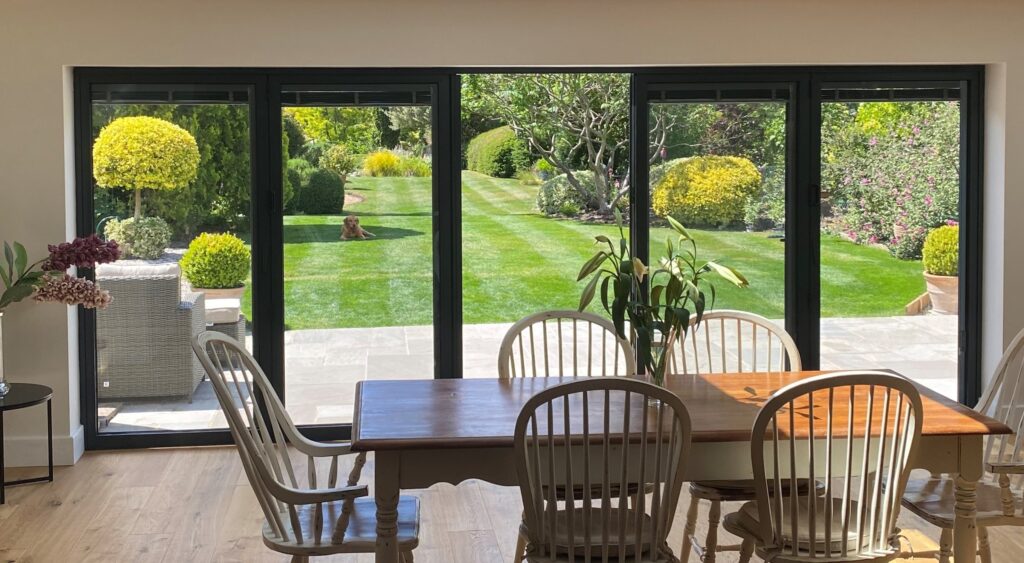What is a U-value?
What Is A U-Value? U-values are a critical aspect of building performance, particularly when it comes to glazing systems. They serve as a measure of thermal transmittance, indicating how effectively a window or door can prevent heat loss or gain. Wondering, what is a U-value? This blog post will talk you through implications for efficiency, and how they can influence your choice of glazing solutions. What is a U-value? U-values measure the rate of heat transfer through building elements, particularly windows and doors. This measurement indicates the effectiveness of materials in resisting heat flow, based on the temperature difference between the inside and outside. Expressed in watts per square meter per Kelvin (W/m²K), a lower U-value signifies better insulation properties. What’s the Difference Between U-value and R-value? It measures the thermal performance of building assemblies like insulated glass units (IGUs), whereas R-value is used to assess the insulation quality of other building components, such as walls, floors, and roofs. R-value measures thermal resistance, which is the ability of a material to resist heat flow. These two metrics are mathematically related, as they are reciprocals of each other. A lower U-value signifies better insulation, while a higher R-value indicates greater resistance to heat transfer. What About U-value and K-value? U-value and K-value both measure a material’s thermal transmittance, or how much heat passes through it. K-value specifically measures thermal conductivity, which is a material’s ability to conduct heat. K-values have been replaced by U-values for windows and doors. Importance of U-Values Energy Efficiency A lower U-value means reduced energy consumption for heating and cooling, translating into lower utility bills. Comfort Homes with windows that have low U-values maintain a more stable indoor temperature, enhancing comfort levels for occupants and making the home more energy efficient. Environmental Impact By choosing energy efficient windows and doors, homeowners can contribute to a decrease in carbon emissions, aligning with sustainability goals. What Constitutes a Good U-Value? For new homes, the recommended U-value for windows or doors inclusive of frames and glazing is typically around 1.4 W/m²K or lower. Energy Efficiency A window’s U-value has a direct impact on energy efficiency, influencing not only heating and cooling costs but also overall comfort within the home. Heat Transfer Higher U-values mean more heat escapes in winter, leading to increased heating costs. Cooling Costs In summer, higher U-values can result in higher air conditioning costs due to increased heat gain. Long-Term Savings Investing in quality windows and doors may incur higher initial costs but can lead to significant savings over time through reduced energy bills and improved comfort. Improving Energy Efficiency Enhancing the energy efficiency of windows can be achieved through various strategies. Here are some of the options you can choose from. Double Glazing Incorporating two panes of glass with an insulating gas in between significantly reduces heat flow compared to single glazed windows. Triple Glazing Adding a third pane further improves insulation, ideal for extremely cold climates. Find out how double and triple glazing affect U-values here! Low-E Coatings These coatings reflect heat back into the room, improving efficiency. Why It’s Important Understanding energy efficiency is essential for anyone involved in building or renovating a home. By selecting windows and doors with lower U-values, homeowners can enhance efficiency, reduce utility costs, and contribute to a more sustainable environment. As building regulations continue to evolve for new buildings, staying informed about energy efficiency is crutial for making informed decisions regarding window choices. Contact Us FAQs What is considered a good U-value for windows? For new constructions, a U-value of 1.4 W/m²K or lower is generally recommended. How do U-values affect energy efficiency? Lower U-values lead to reduced heat loss and gain, contributing to lower energy bills and increased comfort in homes. Can U-values be improved? Yes, they can be improved through various methods, including using double or triple glazing and low-E coatings.
What is a U-value? Read More »


